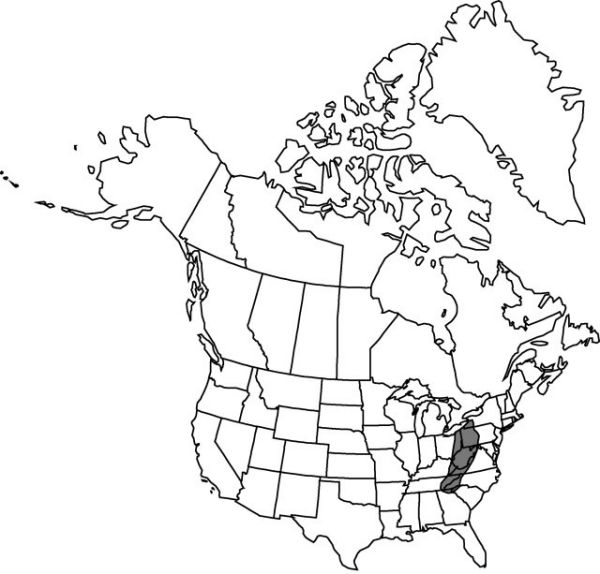Difference between revisions of "Clintonia umbellulata"
Mem. Torrey Bot. Club 5: 114. 1894.
FNA>Volume Importer |
FNA>Volume Importer |
||
| Line 15: | Line 15: | ||
|name=Clintonia allegheniensis | |name=Clintonia allegheniensis | ||
|authority=Harned | |authority=Harned | ||
| − | }}{{Treatment/ID/Synonym | + | }} {{Treatment/ID/Synonym |
|name=Xeniatrum umbellulatum | |name=Xeniatrum umbellulatum | ||
|authority=(Michaux) Small | |authority=(Michaux) Small | ||
| Line 33: | Line 33: | ||
|elevation=200–1000 m | |elevation=200–1000 m | ||
|distribution=Ga.;Ky.;Md.;N.Y.;N.C.;Ohio;Pa.;S.C.;Tenn.;Va.;W.Va. | |distribution=Ga.;Ky.;Md.;N.Y.;N.C.;Ohio;Pa.;S.C.;Tenn.;Va.;W.Va. | ||
| − | |discussion=<p>Clintonia umbellulata and C. borealis are allopatric in the southern Appalachians (P. P. Gunther 1972). A putative hybrid between the two, C. allegheniensis Harned (J. E. Harned 1931) is not recognized here and is regarded as a mere fruit-color variant of C. umbellulata (F. H. Utech 1973). Isozyme evidence supports this conclusion (M. T. Blain 1997).</p> | + | |discussion=<p><i>Clintonia umbellulata</i> and <i>C. borealis</i> are allopatric in the southern Appalachians (P. P. Gunther 1972). A putative hybrid between the two, C. allegheniensis Harned (J. E. Harned 1931) is not recognized here and is regarded as a mere fruit-color variant of <i>C. umbellulata</i> (F. H. Utech 1973). Isozyme evidence supports this conclusion (M. T. Blain 1997).</p> |
|tables= | |tables= | ||
|references= | |references= | ||
| Line 57: | Line 57: | ||
|publication year=1894 | |publication year=1894 | ||
|special status= | |special status= | ||
| − | |source xml=https://jpend@bitbucket.org/aafc-mbb/fna-data-curation.git/src/ | + | |source xml=https://jpend@bitbucket.org/aafc-mbb/fna-data-curation.git/src/8f726806613d60c220dc4493de13607dd3150896/coarse_grained_fna_xml/V26/V26_247.xml |
|genus=Clintonia | |genus=Clintonia | ||
|species=Clintonia umbellulata | |species=Clintonia umbellulata | ||
Revision as of 16:43, 18 September 2019
Plants 2.7–6 dm; rhizomes short, thick. Cauline leaves 3–4; blade dark green, oblong to obovate-elliptic, 18–30 × 4.5–8 cm. Inflorescences in terminal clusters, 10–25(–30)-flowered; bract 1, foliaceous. Flowers: tepals white to greenish white, often spotted purplish brown or green distally, ovoid-obovate, 5.5–8 × 2.7–4 mm; filaments 5.5–7 mm; anthers short-oblong, 3.5–5.5 mm. Berries black, globose to ellipsoid, 2–4-seeded, 6–8 mm. Seeds 3–4 mm. 2n = 28.
Phenology: Flowering early May–late Jun.
Habitat: Rich cove hardwood forests
Elevation: 200–1000 m
Distribution

Ga., Ky., Md., N.Y., N.C., Ohio, Pa., S.C., Tenn., Va., W.Va.
Discussion
Clintonia umbellulata and C. borealis are allopatric in the southern Appalachians (P. P. Gunther 1972). A putative hybrid between the two, C. allegheniensis Harned (J. E. Harned 1931) is not recognized here and is regarded as a mere fruit-color variant of C. umbellulata (F. H. Utech 1973). Isozyme evidence supports this conclusion (M. T. Blain 1997).
Selected References
None.